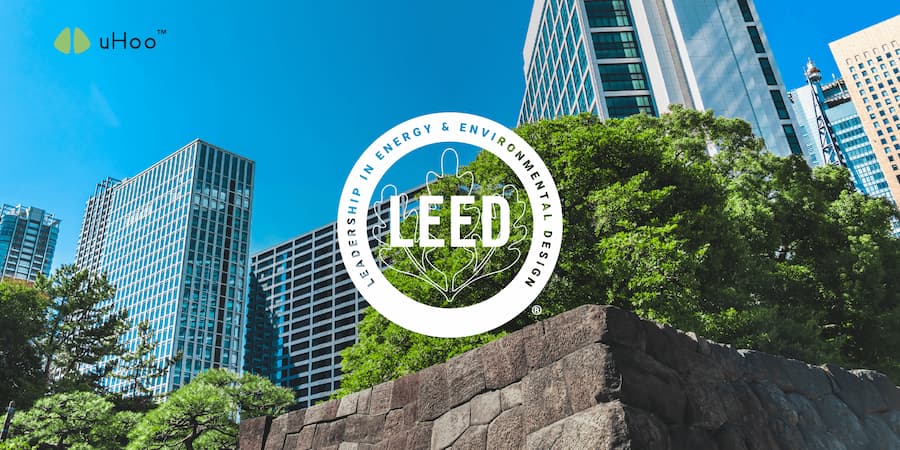What is LEED certification?
Leadership in Energy and Environmental Design or commonly known as LEED, is a certification program that promotes sustainable practices in the design and development of built environments. LEED’s development grew from the formation of the US Green Building Council (USGBC) in 1993 by three individuals: David Gottfried, Mike Italiano and Rick Fedrizzi, who served as president, CEO and founding chair of the organization.
What is the US Green Building Council (USGBC)?
The U.S. Green Building Council (USGBC) is a non-profit organization that expresses its commitment to creating a sustainable future through cost- and energy-efficient green buildings. USGBC exists with a mission to transform the way built environments and communities are designed, established, and operated, enabling a prosperous, an environmentally and socially responsible environment that improves the quality of life.
Different Types of LEED rating systems
LEED offers various rating systems to accommodate different types of buildings and projects. Each rating system focuses on specific aspects of sustainability and provides a framework for evaluating and certifying the environmental performance of a building or community.
- LEED BD+C rating system applies to new construction and major renovations across various sectors, including commercial buildings, core and shell developments, schools, retail spaces, data centers, warehouses, hospitality, and healthcare, ensuring sustainable and efficient design.
- LEED for Interior Design and Construction (ID+C) is a certification system for complete interior fit-out projects, covering various space types. It applies to commercial interiors (non-retail and non-hospitality spaces), retail environments where consumer goods are sold, and hospitality spaces such as hotels, motels, and other short-term lodging facilities, with or without food services.
- Building Operations and Maintenance (O+M) applies to spaces with minimal or no construction, requiring full occupancy and operation for at least a year, covering entire existing buildings or specific interior spaces used for commercial, retail, or hospitality purposes.
- Neighborhood Development (ND) applies to new or redeveloped land projects with residential, nonresidential, or mixed uses, offering LEED ND: Plan certification for projects in planning or construction phases and LEED ND: Built Project certification for fully completed developments.
- LEED for Residential certification applies to all types of residential projects, including new single-family homes (attached or detached), multifamily buildings with two or more units, and core-and-shell multifamily constructions undergoing major renovations without a full interior fit-out.
- LEED for Cities and Communities provides certification for sustainable development, with cities—including towns, counties, and local governments—typically applying through governing bodies, while communities, such as districts, campuses, and economic zones, are led by private developers, corporations, universities, or NGOs in various stages of planning, development, or redevelopment.
What does the LEED certification measure?
LEED focuses on the following concepts:
- Integrative process
- Location and transportation
- Sustainable sites
- Water
- Energy
- Materials and resources
- Indoor environmental quality (IEQ)
LEED certification process
To establish LEED-certified buildings, projects are required to satisfy all prerequisites and earn a minimum number of points. Depending on the points collected, building projects may reach the following LEED certification levels:
- Certified: 40–49 points
- Silver: 50–59 points
- Gold: 60–79 points
- Platinum: 80+ points
What does the LEED certification measure?
LEED focuses on the following concepts:
- Integrative process
- Location and transportation
- Sustainable sites
- Water
- Energy
- Materials and resources
- Indoor environmental quality (IEQ)
LEED certification process
To establish LEED-certified buildings, projects are required to satisfy all prerequisites and earn a minimum number of points. Depending on the points collected, building projects may reach the following LEED certification levels:
- Certified: 40–49 points
- Silver: 50–59 points
- Gold: 60–79 points
- Platinum: 80+ points
Benefits of LEED Certified Buildings
A LEED-certified building isn’t just about being eco-friendly—it’s about creating better spaces for people to live, work, and thrive while also benefiting businesses and the planet. Here’s why it matters:
1. Healthier Indoor Spaces
LEED-certified buildings prioritize cleaner air, natural light, and better ventilation, reducing exposure to pollutants and allergens. This means fewer sick days, improved focus, and overall better well-being for occupants.
2. Lower Operating Costs
With energy-efficient systems, water-saving fixtures, and smart resource management, LEED buildings cut down on utility bills—helping businesses and homeowners save money in the long run.
3. Increased Property Value
Green-certified buildings tend to have higher market demand and retain their value better over time. Companies and tenants are willing to pay more for sustainable, energy-efficient spaces.
4. Positive Environmental Impact
By reducing energy consumption, conserving water, and using sustainable materials, LEED buildings lower their carbon footprint, helping fight climate change and protect natural resources.
5. Stronger Brand & Reputation
For businesses, owning or operating in a LEED-certified space signals a commitment to sustainability, boosting corporate image and attracting eco-conscious customers, employees, and investors.
What is the most significant factor in LEED Certification?
While LEED certification covers various sustainability factors, Indoor Environmental Quality (IEQ) is a key focus, with indoor air quality (IAQ) playing a crucial role. Proper ventilation, pollutant control, and air filtration ensure healthier, more comfortable spaces, enhancing both occupant well-being and overall building performance.
How to achieve LEED Certification with uHoo Aura?
The uHoo Aura air quality monitor can help buildings meet LEED certification requirements by enhancing Indoor Environmental Quality (IEQ)—a key factor in sustainability ratings. Here’s how it supports compliance:
- Optimizing Indoor Air Quality (IAQ) – uHoo Aura tracks pollutants like CO₂, PM2.5, VOCs, and formaldehyde, ensuring compliance with LEED’s air quality standards.
- Enhancing Ventilation Efficiency – By monitoring airflow and CO₂ levels, uHoo Aura helps optimize ventilation rates for healthier spaces.
- Supporting Thermal Comfort Standards – The device measures temperature and humidity, ensuring compliance with ASHRAE and LEED comfort criteria.
- Reducing Pollutant Exposure – Real-time alerts and data analytics allow proactive management of contaminants, aligning with LEED’s low-emission material requirements.
- Providing Data for Certification – uHoo Aura generates detailed reports that can be used as documentation for LEED audits and performance tracking.



